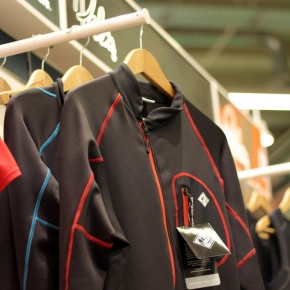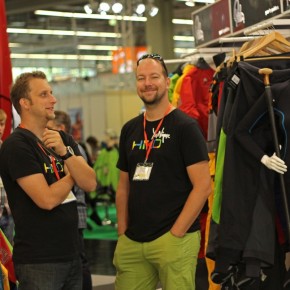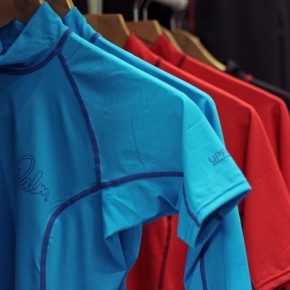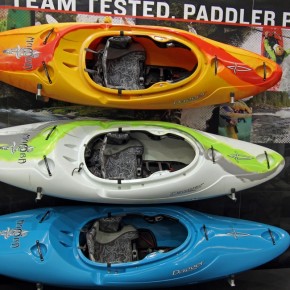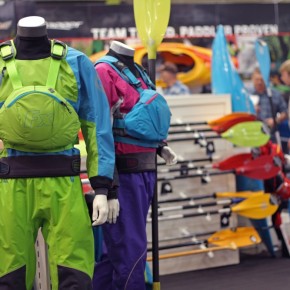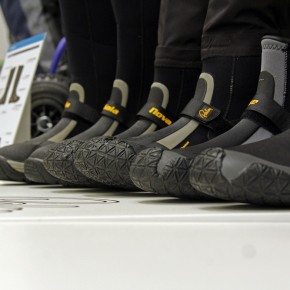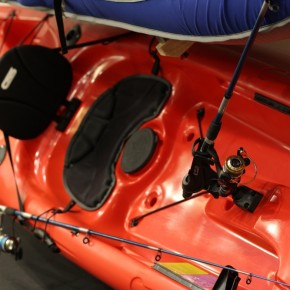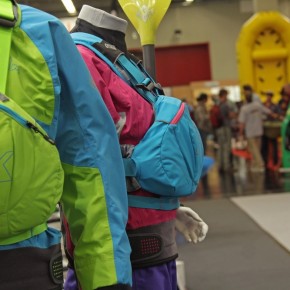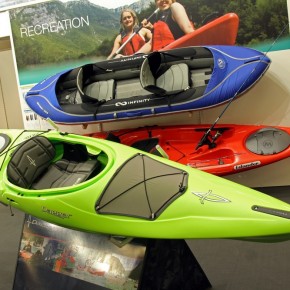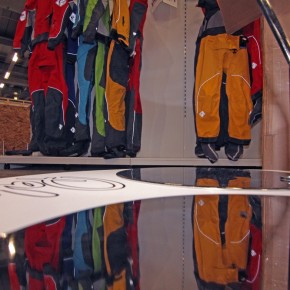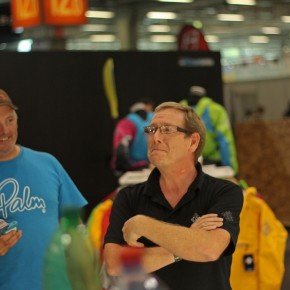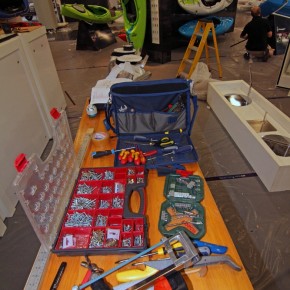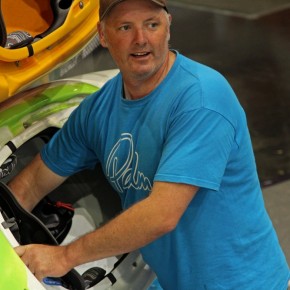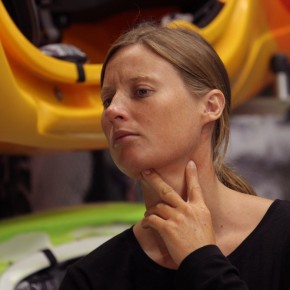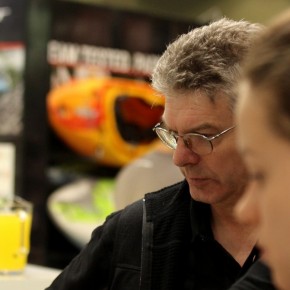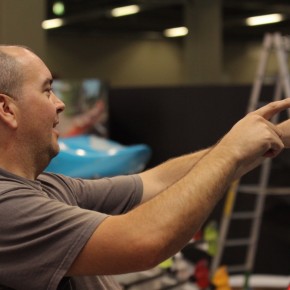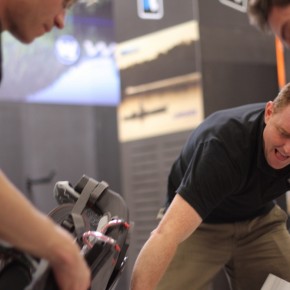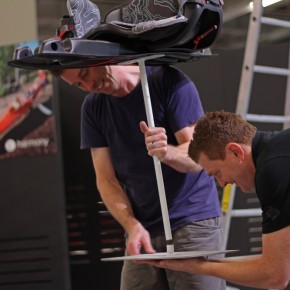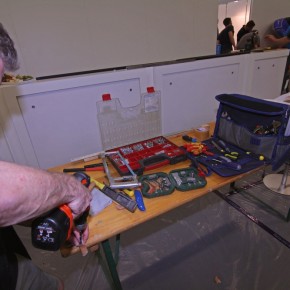Dynamic Rockhopping – so stand es auf dem Plan. Als gestandener Tourenpaddler aus dem Süden der Republik ist für mich diese Art des Paddelns ebenso selten wie exotisch. Im Grunde ist es ein Spiel mit der Dynamik der Wellen in den Felsen der Küstenbereiche. Vermutlich alle von uns kennen diese Tage, wo an windumtosten Küsten die Gischt spritz und die Wellen gegen die Felsen klatschen. Kein Nichtpaddler käme vermutlich auf die Gedanken, sich in diesen Wellen zu tummeln!
Nicht so der ambitionierte Seakayaker  Da ich wenig Gelegenheit habe, mich in sog. rockgardens rumzutreiben stand dieser Workshop ganz oben auf meiner Wunschliste und mit Steve Scherer und Matt Nelson hatte ich auch kompetente Menschen an meiner Seite.
Da ich wenig Gelegenheit habe, mich in sog. rockgardens rumzutreiben stand dieser Workshop ganz oben auf meiner Wunschliste und mit Steve Scherer und Matt Nelson hatte ich auch kompetente Menschen an meiner Seite.
Cape Forschu war die passende Location und der Wind der vergangenen Tage hatte für die passenden Bedingungen gesorgt. In Lee der Insel hatten wir zu Beginn noch moderate Bedingungen. Mit zunehmender Nähe zur Spitze des Kaps nahm der Swell aber deutlich zu und der Wind ebenfalls. Dort hatten wir am Ende satte Brecher mit 2 Metern Höhe. Das war dann auch die Grenze meines persönlichen Komfortbereichs!
Aber der Reihe nach: Das grundlegende Mantra des Steinehüpfens ist definitiv timing, timing und timing. Erste Übung wär demnach! sich vor einem ordentlichen Stein zu positionieren und zu warten, bist die passende Welle kam und es genügend Wasser über dem Fels gab. Eigentlich einfach! Es ging dann auch besser als gedacht, die Sorgen um mein Kevlar -Mietboot legten sich auch im Laufe der Zeit. So nahmen dann die Übungen an Komplexität zu und schneller als gedacht war es ein wirkliches Spiel mit den Wellen. Ein bisschen wie im Fahrstuhl und der Achterbahn ging es hoch und runter. das Grinsen wurde immer fetter, ich immer mutiger und am Ende hing ich doch wie ein Käfer auf dem Rücken auf einem, Gott sei Dank, mit Seetang gepolsterten Stein fest  Mein Boot nahm es mir nicht krumm und die nächste große Welle mich wieder mit.
Mein Boot nahm es mir nicht krumm und die nächste große Welle mich wieder mit.
Mein persönliches Highlight des Tages kam dann zum Schluss. Ganz vorne an der Spitze des Kaps war ein etwa 15 Meter breiter Durchlass. Durch diesen presste Der Wind die inzwischen beachtlichen Wellen? Die Lücke wär wohl ordentlich tief, die Wellen brachen sich nur am Rande, entlang der Felsen? mit dem Bug voraus standen wir am Ende direkt vor dem Spalt und haben uns von den Wellen in die Höhe katapultieren lassen. Zumindest gefühlt! Ein Hammergefühl, und kaum zu beschreiben….
Ich habe zumindest ein brauchbares Bild zusammengebracht. Steve, der mitten im Gewühl seelenruhig seine Kamera ausgepackt hat, hat mir ausgeholfen.
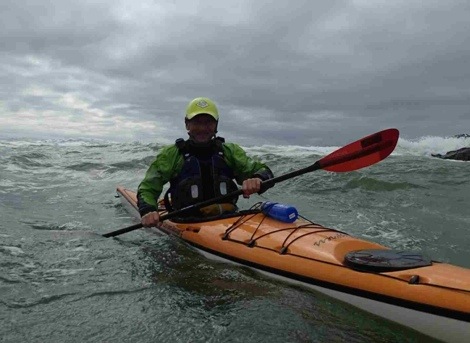
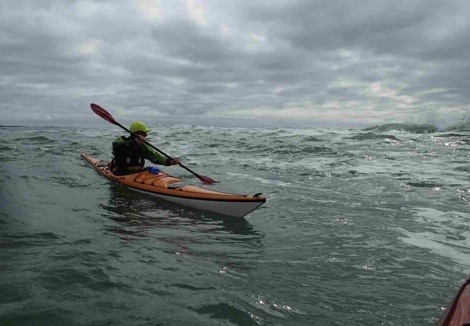
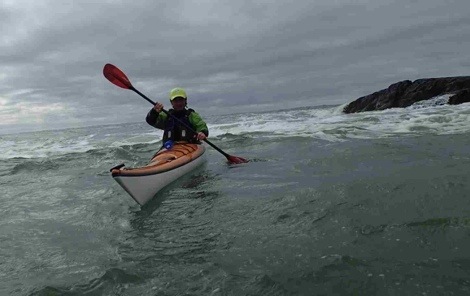

Eigentlich stand am ersten Tag “Surfing with style” mit Nick Cunliff auf dem Programm. Leider hat uns das schöne Wetter einen dicken Strich durch die Rechnung gemacht. Es war weit und breit keine Surfwelle zu entdecken. Strahlend blauer Himmel, eine leichte Brise und kein Sturmausläufer, der uns ordentlich Swell beschert hätte. Die Kehrseite war allerdings, dass uns draußen zwischen den Inseln dicker Nebel das Leben schwer machte. Es blitzelte zwar ab und an die Sonne durch, die Sicht war trotzdem massiv eingeschränkt.
Das hier war unser Einsatzgebiet:

Nachdem uns die Surfwellen versagt blieben, haben wir und auf jede Strömung gestürzt, die uns in den Weg kam. Hier im unteren Teil der Bay of Fundy hatten wir “nur” ca. 6 Meter Tiedenhub, im oberen Teil stattliche 17 Meter. Durch den recht moderaten Wind sind die Bedingungen auch entsprechend geblieben. Es gab nur wenig Stellen, an denen sich Gezeitenströmungen aufgebaut haben. Nichtsdesdotrotz ein klasse Einstieg, ein tolles Revier und Ausicht auf schlechtes Wetter am Sonntag.
Ach ja … abands gab es nach einem opulenten Seafood-Dinner ein Bericht von Justin Curgenven über Tierra del Fuego. Abenteuer aus erster Hand.


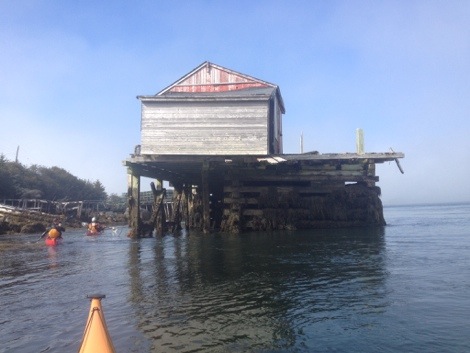
Den Abend haben wir entspannt und mit Seafood vom Feinsten in der Ya Old Argyler Lodge verbracht.

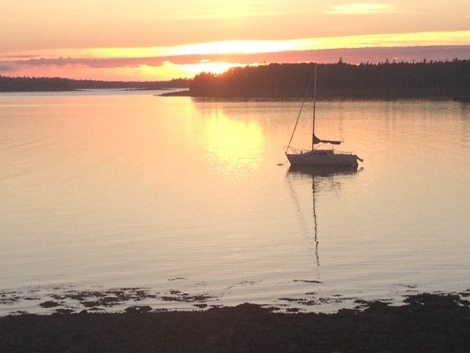
Der Herbst ist meine persönliche Reise- und Fortbildungszeit. Auf dem Weg nach Oregon, zur National Paddelsports Conference der ACA, bin ich deshalb in Nova Scotia gelandet. Der Ruf der Bay of Fundy als exquisites Seakayak-Revier hat mich gelockt. Zudem findet hier aktuell des BOFKS statt, das Bay of Fundy Sea Kayak Symposium.
BOFSKS.com
Das who is who der Coaches ist am Start, auch Justin Curgenven hat es bis in die Bay geschafft und wird ebenfalls mit auf dem Wasser sein.
Geplant habe ich einen Workhop mit Paul Kuthe “Surfing with style”, einen Workshop “tide Race and overfalls” mit Christopher Lockyer und einen Workshop mit Sean Morley zum Thema “rough water rescues”.
Ganz besonders bin ich auf einen Vortrag am Samstag gespannt. “Mit dem Seakayak durch den Grand Canyon!”. Das steht im nächsten Juni für mich an, zwar nicht im Seakayak sondern im Open Canoe, aber immerhin 
Heute steht noch nicht viel auf dem Programm. Get together mit den Coaches und den anderen Teilnehmern in Ya old Argyler Lodge, einem wunderschön gelegenen Restaurant und unse Base für das Symposium. Gestern Abend habe ich bereits die Aussicht genossen…
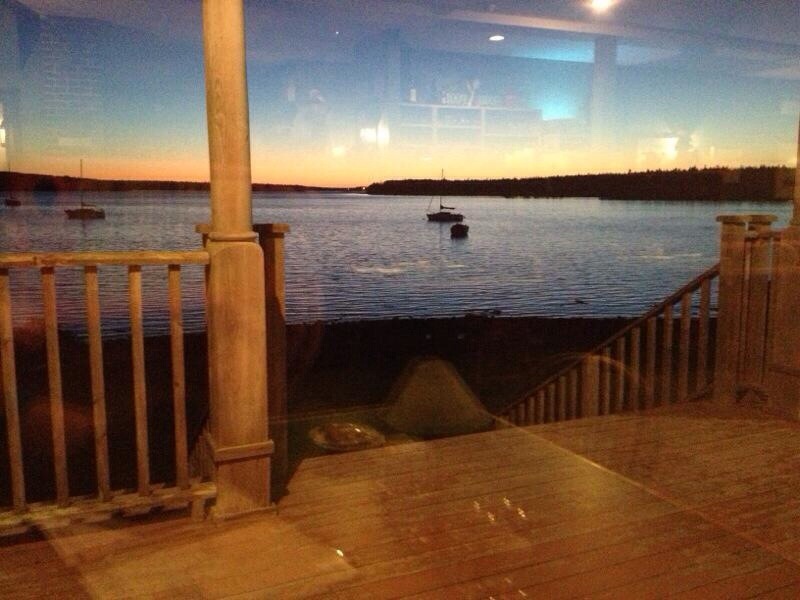
Untergebracht bin ich in einem herrlichen B&B direkt am Wasser und mit Meerblick. Die Gastgeber sind schwer bemüht, mich zu mästen. Vermutlich hat meine schmale Erscheinung ihnen Angst eingejagt  Und so sah es gestern Abend aus…
Und so sah es gestern Abend aus…

Ich werde jetzt noch ein paar Kleinigkeiten besorgen, mich in die Sonne setzten und den Tag genießen … stay tuned!
Pushing your self to paddle harder rivers and rapids is not always easy. Before you make that decision to put on, there are so many different pressures and questions; Will I make all the necessary moves? Am I ready for this? Where will that water push me? Why do I even want to paddle this? Is that stopper flushing enough? Will I get hurt? What if I go over?
Most of the time when I’m confronted with a harder rapid, these kind of questions start to race through my head. To be honest I would be worried if they didn’t. After all, fear is mainly formed by the unknown or negative past experiences. To paddle a rapid well I find my mind needs to be 100% clear, focused and committed. But with all those questions whizzing around, it can be hard to achieve.
Somewhere between scouting that rapid, and dropping in I usually manage to settle the nerves and get myself into that clear state of mind. Over the past few years, I have developed a technique that helps me to do this. So I thought I would share & discuss it, in the hope that it may be useful to others. It’s very possible its something you already do, if this is the case perhaps this article will draw some attention to the skill, and help you develop it.
To get us started the skill I’m going to be talking about is commonly known as visualization; put in simple terms, imagining. Think back to a rapid that you have paddled multiple times. I’m guessing the more times you paddle it, the better you get at it (excluding the odd unlucky mess up) There are many reason we usually paddle stuff better after a few attempts but in essence the main reasons are because we start to get a feeling for what the water is going to do to us and when we need to place our strokes to get us down in good style. Provided you can agree with the above sentence, you will hopefully kind of agree with the next one. If we can get good enough at visualizing our selves paddling a rapid, then we have effectively paddled it, and have therefore already practiced it. So when we ‘actually’ paddle said rapid, we should be better off than if we had not visualized it.
An exercise for you; Imagine you are at the top of one of the more challenging rapids you have ever undertaken. You have scouted the rapid, safety is all set up and your boat is waiting at the top, now it’s all up to you. Can you imagine yourself paddling the line? If so, how vividly? Is your image in colour? Are you imagining your self in first person or third person? Can you make out every single move? Are you styling the line or do you see yourself messing up? Can you hear the water? Is it in real time, slow motion or fast forward? Can you sense what it feels like?
If you can answer some of these questions then you already possess the skill’s to visualize. Which I’m fairly sure everyone can do to some extent or another? However like all skills, they can be improved with good practice.

Unwrapping the skill of visualizing our selves paddle a rapid also expose’s other skills which we need to master. One of which is reading the terrain (white water/rapids). If we cant read the terrain, then we are not going to be able to work out where we need to go and if we cant do that, then we cant visualize our route through the rapid. If your new to white water, try to ask better paddlers about rapids, find out about the different features and how the river works. Reading the river is a skill and I think we can always improve it throughout our kayaking careers.
Once you are able to read the terrain and pick a path, you need to have a good idea of how you are going to get your boat to follow that route. Here is where we need to understand both the tactics (e.g lateral momentum etc) and the hard skills (e.g paddle waggling, edging etc) of white water kayaking.
With these two major components in place we are free to see the best route though a rapid, and know how to command the boat to follow that path. From that point on successful visualization becomes a lot easier. The reason it becomes successful visualization is because we are now creating an image of what should in theory be a positive out come e.g we style the rapid because we have picked a good line and rehearsed the correct moves.
I think it’s important to point out that picking a line, is not the same as actually imagining your self paddle it.
Going back to that first exercise, you can hopefully see that there is a sliding scale of creating an imaginary event. At the simplest end we might just be able to see ourselves from a third person point of view, but the images is hazzy and we cant work out how every move might look. And at the other end, we can create an image so intense it feels real.
My theory is that the more realistic an image (or perhaps brain video?) We can create, the more useful it’s going to be to us.
Second Exercise: Look at the photos bellow of the same rapid. Your challenge is to pick a line, and then to see if you can visualize yourself paddle it. Can you create these pictures into a brain video of yourself paddling the rapid?
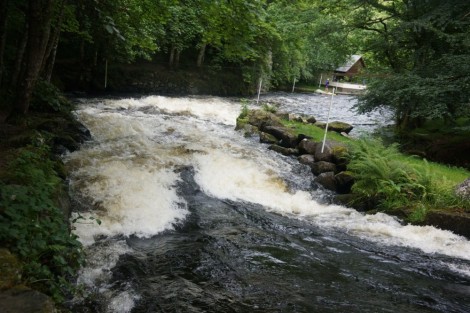
Top view

Bottom stopper
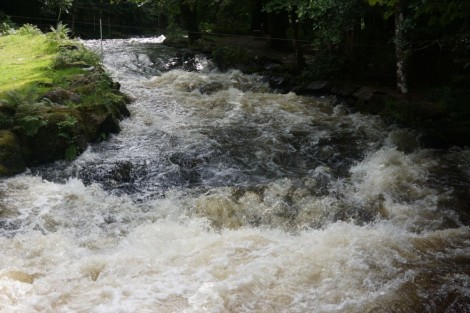
Bottom View
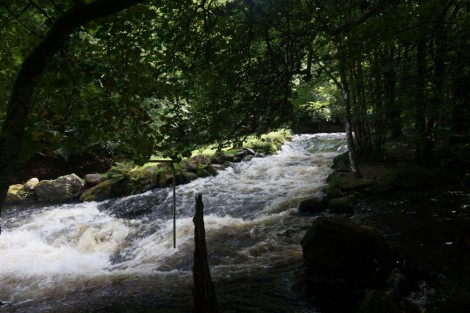
Side View
If you can, it’s probably because you have paddled a similar rapid before. If you have never paddled anything like this, then it may be very difficult to picture. The reason behind this is because of Engrams.
When learning a new paddle stroke, our motion is often inaccurate and jerky. This is because all of our muscles are having to be monitored through various kinesthetic sensors that are then analyzed by the brain, which in turn sends signals back to our muscles. If we continue to try to learn that stroke, our brain starts to write an Engram. This is a file stored by our brain, with an instruction manual on how to do that movement. Not only is it an instructional file on how to do that skill, it is also an effective short cut which allows us to reproduce the skill with a lot less effort. With an Engram in place our brain in no longer having to monitor thousands of conscious signals, which allows it to concentrate on other things.
To put this in context, the larger the range of rapids we paddle, the bigger the selection of engrams available to us. When we arrive at a rapid that looks/feels similar to something we have done in the past, our brain is able to access old engrams and use it to help us. Hence the masters of visualization will be the people who are very experienced in their sport. They will have an engram for almost any situation, so like a jig saw puzzle they’re able to put the pieces together to create an image for every part of the rapid. Whereas a less experience paddler may be able to look at a rapid, visualize breaking in, paddling over the waves, but then get stuck when it comes to getting over/around the final stopper, this is because they have never been over a drop and as such do not know how it looks or feels. But the more experienced paddler would have an engram for that drop and as such would be able to picture it and know how to apply the skill.
So the type of Visualization we have talked about so far is all aimed at creating a vision of yourself paddling a chosen rapid. This is very useful for learning where to go, and what moves to put in. In fact it has been shown by research (scanners) that by visualizing a task, your brain is firing all same signals as if it were when doing the actual task.
For the purpose of this article I would like to call this ‘factual visualization’. You are trying to create what will hopefully become an event. You are using the visualization technique to help you perform better.
To a large extent ‘Factual Visualization’ will only help us control our anxieties if we believe that in doing it, it will make our upcoming performance better. There is also one other type of Visualization technique that I would like to talk about. For the sake of the article I will call it ‘Motivational Visualization’ this is where we perhaps need to boost our confidence and get ourselves all fired up and ready to go. How to go about this? Well, I think its simple, picture some of the more positive moments you have had down challenging white water in the past. Remind your self of what you have done in the past, and how capable you are of doing it. It will be most useful if you can picture a similar style of rapid. But if not, don’t worry, just keep the positive flow’s coming, picture your self as strong and capable and ready to style!
Think of a game of tennis, so much of it is mental, when one player gets on a high the other may be on a low. Now think about how there performances differ. All we are trying to create with Motivational Visualization is the mind set of the winning tennis player.
Some top tips for practicing:
The great thing about visualization is that it can be practiced in most day to day tasks. Try simple exercises like putting an object on the floor (such as a ball) then stand back a few meters, visualize picking up the object, then shut your eyes and see if you can do it.
Like all new skills in kayaking, try it out on terrain you already feel quite confident in before trying it out on bigger rapids.
Try closing your eyes, to help you focus.
Use your hand to draw the shape of your chosen line, this could be a helpful prop and allow you to learn the line in a learning style perhaps more suited to you.
Do some air paddling. It may look a little odd, but by practicing the sequence of stroke’s on the river bank you will start to build up an idea as to how it should feel. To do this in the most effective way visualize your route down the rapid whilst doing the strokes.
The next time your out on the river, have a go at visualizing some lines (factual visualization), as well as conjuring up some strong positive images (Motivational visualization). Once you can see yourself getting all the way down, and hitting every move, see if you feel calmer. If you cant see it or you can only see your self not making the line, then perhaps your not ready for that rapid?
I hope its been a helpful read, its mainly my own thoughts on the matter, combined with some previous reading on the subject.
Cheers,
Jake

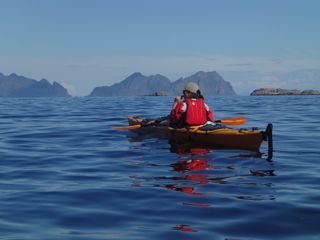

A trip out to Rost ,the southern most chain of islands in Lofoten , i had been here once before on an open crossing of 6 hours ,but never had a chance to explore.A magical place full of peace and wildlife and very different from the other islands and rarely visited by kayakers
Well worth a visit

With so many new and updated products to show off this last week, it’s hard to choose our favourites but with a camera shoved in their face, the people behind Palm Equipment did eventually manage to pick out their favourites.
Watch the video below to see what we liked the best and meet the people who make up Palm…
For those who haven’t seen the last few updates on our Facebook Page the rest of our product videos can be seen here or in the earlier blog postings:
Bye for now,
Pringle
by Anne Huebner

Why sea kayaking: This trip was my very first time in a sea kayak. So why? This spring my boyfriend came up with the idea of doing a sea kayaking trip to the Ionian Sea in Greece so I simply thought: Lets give it a try!
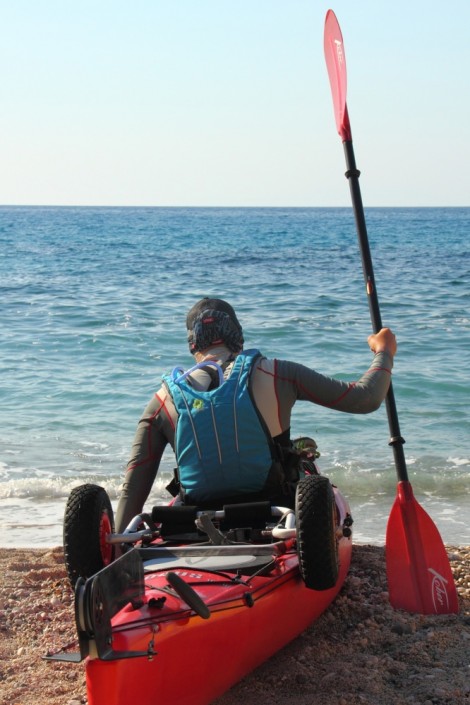
Logistics: We took the car to Venice. Due to the fact that taking the car to Greece would have been quite expensive we decided to leave the car in Venice and went on the ferry to Igoumenitsa as Pedestrians. We were allowed to take the kayaks as bikes for free. In Igoumenitsa we started paddling. Every three days we went shopping in one of those picturesque coastal hamlets to fill up our water and food reserves. We slept wherever we found a nice place along the coast. Thirteen days and 470 km later we reached the town Patras from where we took the ferry back to Venice.
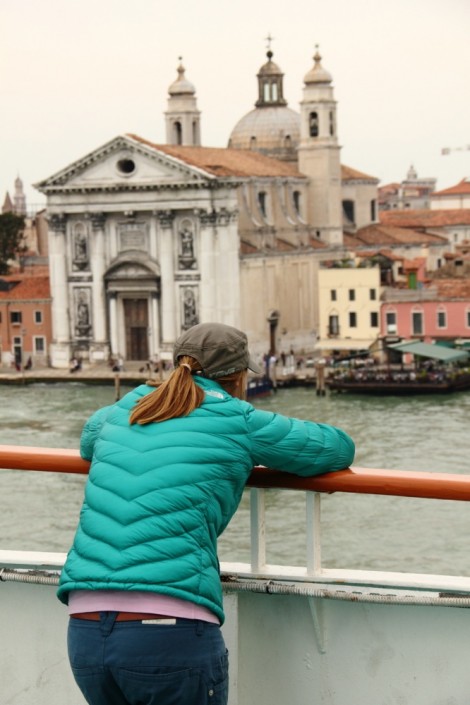
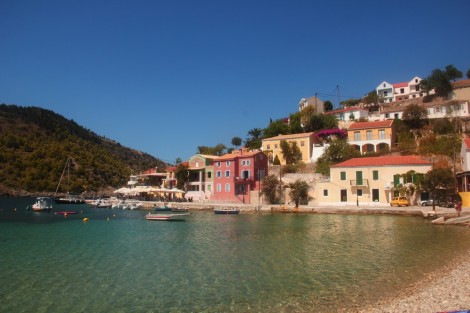
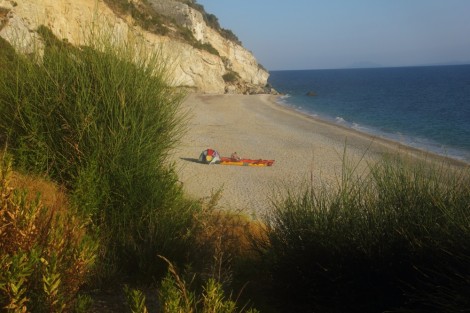
Itinerary: We started paddling in Igoumenitsa were we went southwards along the west coast. Once we reached the island Lefkas we continued paddling southwards along the west coast and from the southern tip we jumped to the next island Kefalonia. Again we paddled down south along the west coast and again from the southern tip we jumped to the Ionian island Zakinthos. From the northern tip of Zakinthos we paddled almost all around the island starting down the west coast and from the southern tip northwards along the east cost almost back to the town Zakinthos. From there we jumped to Peloponnese and continued along the coast to Patras.



Conclusion: During the trip we have seen endless empty beaches, deserted bays and crystal clear water with all colours of blue, flying fishes, a giant turtle and few of the most beautiful sunsets. But we did not only get to know the beauty of sea kayaking. We also had a few days with strong wind. On that one day we paddled southwards the west coast of Zakinthos there were quite big waves – I think, the biggest waves I have ever paddled, which was very impressive. Luckily we had the waves coming from the back and so we got pushed forward about 50 km almost without any effort – except for my nerves.
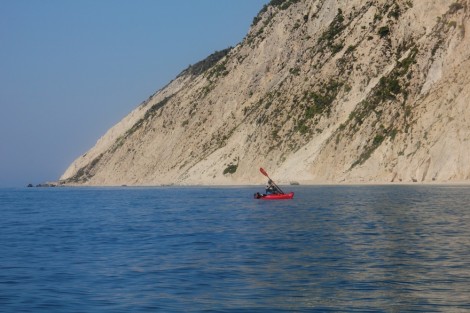
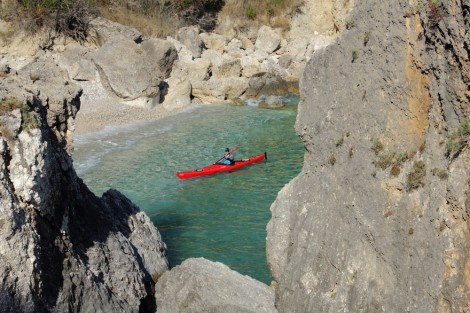
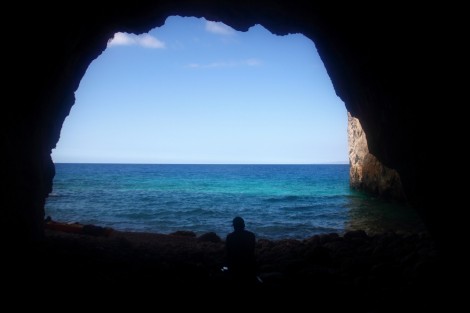


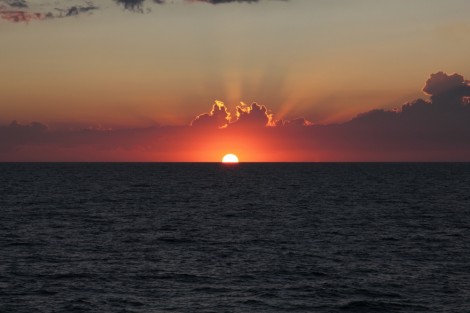
Now, after the trip, I am very happy that I tried it and I am sure I will do it again – maybe once a year – ?
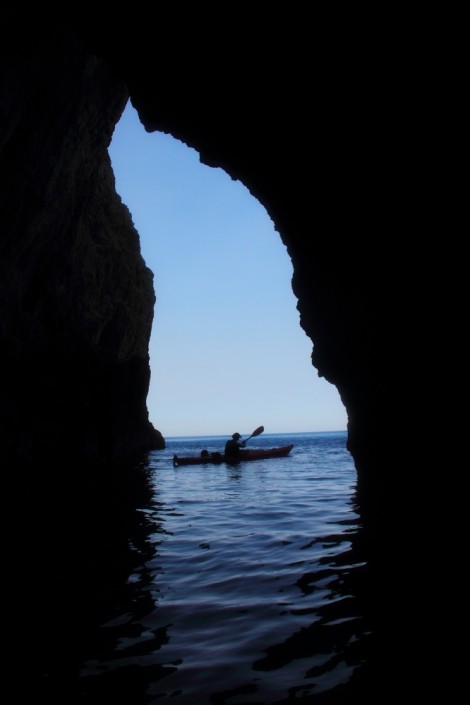
Thanks to Palm Equipment for getting us the Dagger Exodus boats and Kober Paddles for the touring blades!

All photos by Michael Sommerauer

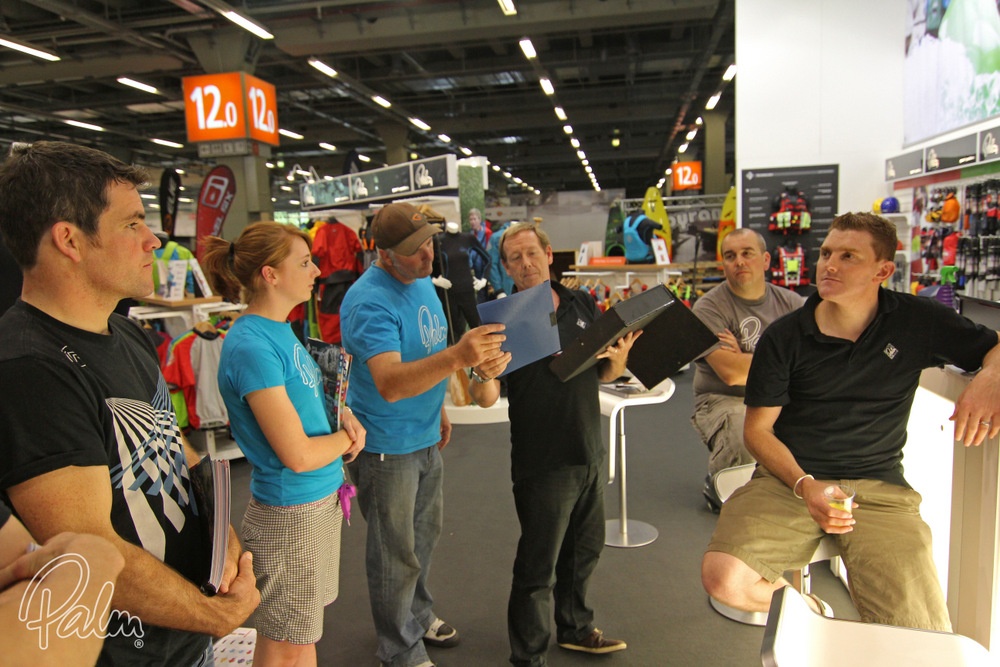
This morning PaddleExpo 2012 opens here in the beautiful german city of Nuremberg.
This year we have 50 items of new or updated kit to show to the world over the next 3 days!
Today was our last day of set up, so below you can catch a glimpse of some of the gear and boats we have lined up…
Throughout the exhibition we’ll be uploading videos, photos and blogs so everyone can see and find out more about what will be coming to stores near you soon.
I personally have seen quite a few new things I’ve set my eyes on 
Check back soon for more!
Pringle
Photo/ Videos by Pringle & Katya – RiverZoo.com
Choosing what to pack on expeditions can be tricky, often limited by space and weight, meaning the things you take must be multi-purpose. This has never been so much the case than on my recent trip to the Outer Hebrides.
The islands are off the west coast of northern Scotland and a 5 hour ferry from the town of Oban. The chain of islands extends for 210km, most of them being uninhabited. Our target was to sea kayak around the southern tip and base ourselves on the islands to do some multi-pitch sea cliff climbing.
With a perfect weather window, the trip was a total success. The highlights being paddling in the 3m gap formed between the mainland and Liànamuil island in an exciting swell, a four way arch, multi-pitch abseiling and seeing lots of cool wildlife including puffins, seals, eagles and basking sharks.

Narrow Gap at Barra Head
The front hatches of our sea boats were filled with climbing gear leaving limited space for 7 days’ worth of food, something to sleep in and on, and some spare clothes. The only shoes I had were my Palm Gradients and were used with great comfort to paddle over 30km twice in consecutive days and on other days walk and scramble across the islands accessing the crags. I was so impressed with these in the mountainous terrain that I plan to use them again next time I head into the hills at home in North Wales. Their grip,
support and comfort over long distances is as good as any mountain boot.
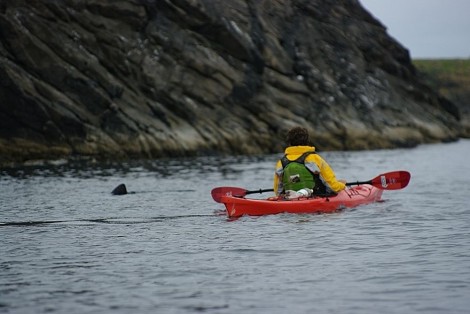
A Bashing Shark.
My Oceana jacket was comfortable over the long paddling distances, a pleasure to use but also kept the wind off me whilst cooking dinner at base camp on the cooler evenings, again multi-purpose as it was the only windproof (& water proof) layer I had taken with me!
I can’t describe the extent to which I enjoy overnighting from a kayak. It’s hard to do within the UK in a white water context, but we have one of the best coastlines in the world so why not enjoy it!
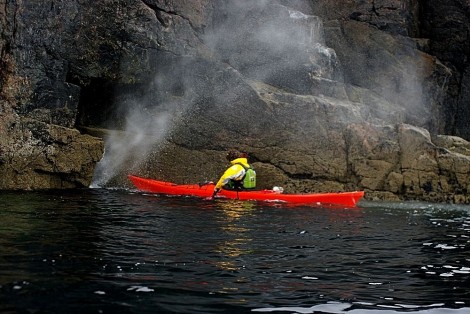
A Blow Hole!
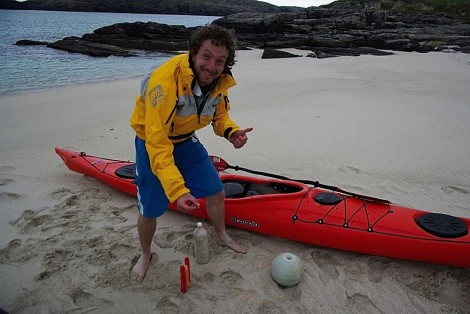
Fish Trap made from beach rubbish.
All photo courtesy of David Fairweather.
Great result on the Oban Sea Kayak Race – After much sweating, swearing and surfing the waves, I managed to come in seventh overall in the race with my trusty Wilderness Systems Tempest 180 pro kayak, and the first recreational \ touring kayak with a time of 2.14-09 for the trip round Kerrera.
Pretty pleased with the results and with beating all the other leading brand fast touring boats, a number or facing boats and a K2. I did manage to get past finisher no 6 in a wave ski at one point on the outside of the island with the rougher water, but fairs fair, he took me on the home run back into Oban bay. Note – must work harder next year.
Not a bad result this year for Mags Duncan in her plastic tempest 165 in the Ness Marathon either, fastest female, fastest sea kayak, beating all the composite boats and smashing the female course record by 12 minutes. As well as the fastest female in the spey marathon proving the wee sister of the tempest range still has it.
A great race, The tempest fast and stable ? Well it beat a few full on racing boats so I guess it must be, certainly being able to put all the drive into forwards speed in the bouncy water helped. Thanks to WS for making a top boat, and to the organisers for handling a great event.
Good result to Nairn Kayak Clubs Michael Surman too in my loaner plastic tempest 170 with a time of 2-19, beating a large number of composite boats.
Looking forward to next year, hope to see you there.
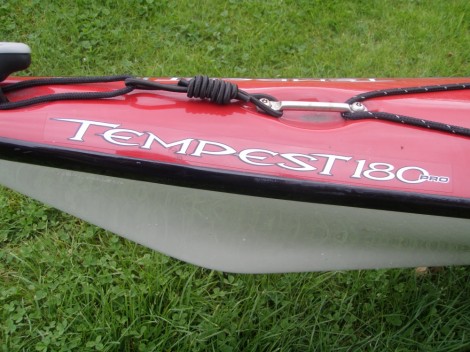
Or maybe the Dee marathon in October ???????
Steve Mackinnon

![]() Da ich wenig Gelegenheit habe, mich in sog. rockgardens rumzutreiben stand dieser Workshop ganz oben auf meiner Wunschliste und mit Steve Scherer und Matt Nelson hatte ich auch kompetente Menschen an meiner Seite.
Da ich wenig Gelegenheit habe, mich in sog. rockgardens rumzutreiben stand dieser Workshop ganz oben auf meiner Wunschliste und mit Steve Scherer und Matt Nelson hatte ich auch kompetente Menschen an meiner Seite. ![]() Mein Boot nahm es mir nicht krumm und die nächste große Welle mich wieder mit.
Mein Boot nahm es mir nicht krumm und die nächste große Welle mich wieder mit.

































